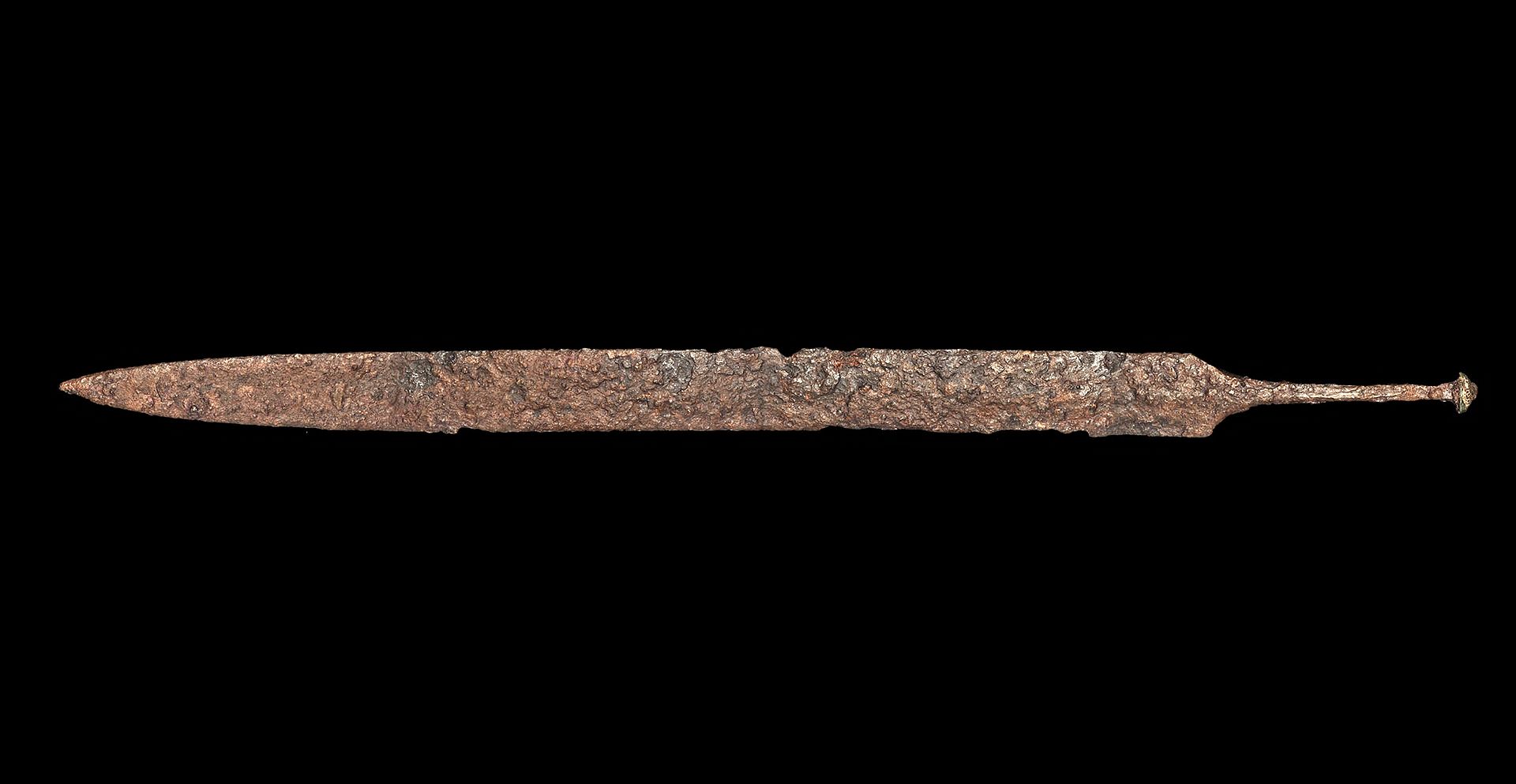Roman Spatha 2nd to 4th Century A.D.
Feb 25, 2015 15:18:41 GMT
Post by Jack Loomes on Feb 25, 2015 15:18:41 GMT

LOT 1122
Estimate
£500 - 800 / EUR 680 - 1,090 / USD 770 - 1,240
Sold for (Inc. premium): £3,630
A broad (4.5cm at shoulder) parallel-sided spatha with convergent tip, lentoid in section with one square and one slightly rounded shoulder; rectangular-section tang at the shoulder developing to square-section at the upper end, hammered over a domed bronze pommel-cap. 692 grams, 74cm (29"). Fine condition.
Provenance
Ex Northern English collection; found near Penrith, Cumbria, UK, 2010.
Literature
Cf. Nørgård Jørgensen, A. & Andersen, H.C.H. Ejsbøl Mose. Die Kriegsbeuteropfering in Moor von Ejsbøl aus dem späten 1.Jh.v.Chr. bis zum frühen 5.Jh.n.Chr., Højbjerg, 2014, figs.23, 24; James, S. Excavations at Dura Europos 1928-1937. VII The Arms, Armour and Other Military Equipment, London, 2004, fig.85 (item 513); Bishop, M.C. & Coulston, J.C.N. Roman Military Equipment From the Punic Wars to the Fall of Rome, London, 1993, fig. 86(7).
Footnotes
The standard length for a spatha is between 75 and 100cm, the longer ones generally round-tipped and used by cavalry. The spatha came to replace the short, stabbing sword (often called a gladius) for the infantry from the 3rd century AD. Swords of this type are found often on the Rhine frontier and in northern Britain, as well as in the Danish bog-offerings such as Nydam and Ejsbøl. They were probably used by Germanic recruits in the late Roman army.
The slight asymmetry of the shoulders is a feature on a few swords of the type, e.g. the Straubing sword, and was covered in use by the organic (wood or bone?) lower guard. The blade does not feature a fuller, neither is it lozengiform in section despite a slight thickening or 'midrib' in the upper quarter.
Source: www.timelineauctions.com/

.png?width=1920&height=1080&fit=bounds)